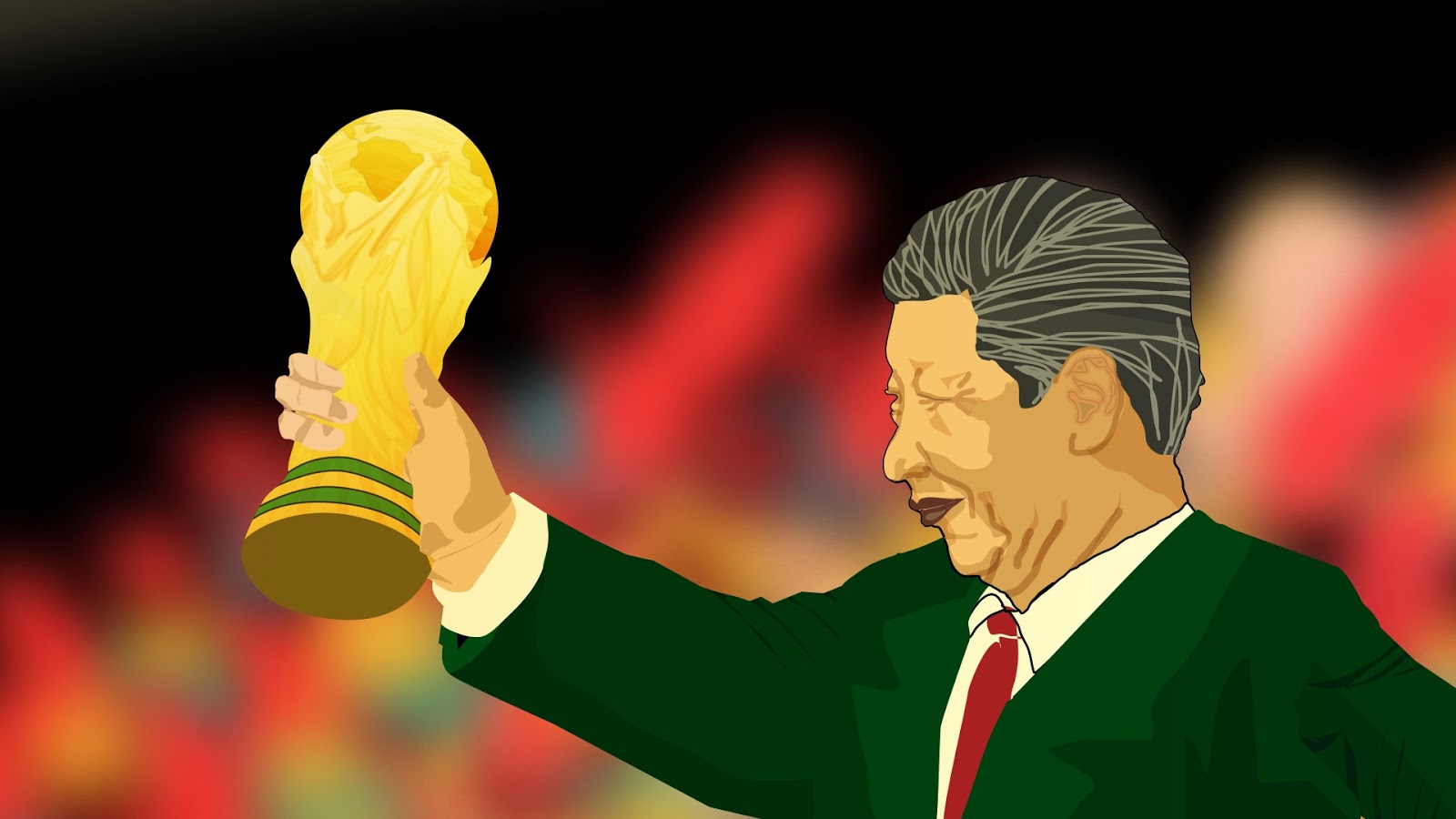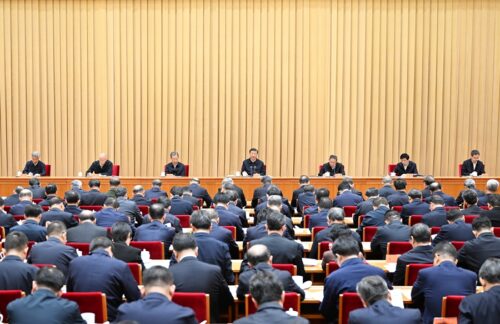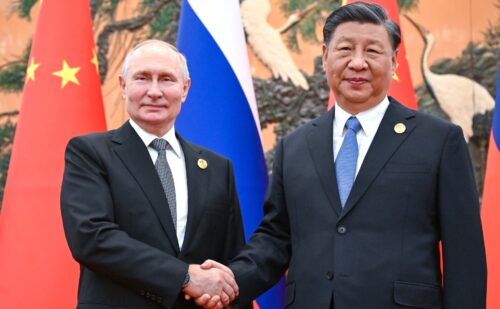The other China Dream: A World Cup
In 2011, Xi Jinping unveiled an ambitious plan to turn Chinese soccer from a national humiliation to a point of pride. Nine years on — at the start of a pandemic-delayed Chinese Super League season — how has Xi's Great Soccer Dream fared, and how have recent events altered its goals?

In the midst of a sweltering Shanghai summer in 1983, Xí Jìnpíng 习近平, then 30 and employed as a party chief in rural Hebei, was furious. He had traveled to the metropolis to watch his beloved Chinese national soccer team play an exhibition match against English club team Watford F.C., only to see the home side suffer a 5-1 thrashing.
Unfortunately, nearly 40 years later, Chinese soccer remains a high liability for embarrassment.
There are few public institutions in China that citizens can unabashedly deride, but China’s national soccer association, the CFA (中国足球协会 zhōngguó zúqiú xiéhuì), is one of them. From widespread match-fixing at the highest level of competition to teams going bankrupt, Chinese soccer has been a comedy of errors through the past few decades.
And the leadership has had enough. In 2011, Xi unveiled an ambitious (some would say “wishful”) plan to turn Chinese soccer from a national humiliation to a point of pride. He’s called it “The Great (China) Soccer Dream” (大国足球梦 dàguó zúqiú mèng). As Xi told students at Peking University in 2014, “China has stood up. It will never again tolerate being bullied by any nation.” Through the Great China Soccer Dream, the sentiment remains the same on the pitch.
Yet nine years on — at the start of a pandemic-delayed Chinese Super League season — how has the plan fared, and how have recent events altered its goals?
The Chinese equalizer
In the spirit of Jiāng Zémín’s 江泽民 famous “three represents” (三个代表 sān gè dàibiǎo), Xi structured his plan into three steps, with short-term, mid-term, and long-term goalposts. Most immediately, Xi called for “improving the environment and atmosphere” for soccer in China at large, coming on the heels of several 2009 major corruption crackdowns in the Chinese Super League (CSL, 中超 zhōngchāo), China’s top club league. Second, Xi envisioned an increase in youth football development and management. Finally, the efforts of the Great Soccer Dream involves China’s re-entry onto the global soccer stage — which means it really wants to host a FIFA World Cup down the line.
While China has a long way to go — the national team was ranked 71st in the FIFA global rankings in 2011, and has slid down to 76th this year — Xi’s plans include creating a platform for systematic reform of national sport governance. At the very core of Chinese soccer reform, the PRC hopes to mirror European national soccer administration models by becoming more market-oriented, encouraging both public and private investment. “The Chinese Football Association has to be built on the principle of legal autonomy,” read a 2016 report from the CFA.
This goal of structural reorganization extends to Chinese club leagues as well. In the same report, the General Office of the State Council called for the CFA to officially divest from the management of the CSL and other professional leagues by instituting independent committees to lead and supervise the daily operations of each league.
Moreover, the Great Soccer Dream has emphasized the importance of intense youth training. While in 2016 there were only 5,000 primary and secondary schools across China that specialized in soccer, the report outlined a goal to raise that number to 20,000 by the end of this year.
Although these goals highlight only a few aspects of the Great Soccer Dream, the endgame remains clear: a Chinese bid for the 2022 World Cup.
Dribbling along
Nearly a decade after the Great Soccer Dream’s announcement, the state of Chinese soccer has made mixed progress toward international recognition.
The good news is that China has more or less achieved its short-term goal of improving the “atmosphere” of Chinese soccer. Attracted by a big payday and a chance to dominate the competition, several European soccer stars have migrated over to the CSL in recent years, including Brazilian forward Hulk, who is slated to earn $20.75 million a year.
The CFA has not spared any expense on facility development, either, as in April of this year, construction began on famous club team Guangzhou Evergrande’s (广州恒大 Guǎngzhōu héng dà) new “super-stadium” — a $1.7 billion project with the goal of becoming a host site for the 2023 Asian Cup (and eventually a World Cup).
China has even adopted the “headhunting” strategy used by the U.S. and several European countries by naturalizing foreign players. While this strategy has proved controversial among Chinese citizens, and in some ways deviates from the nationalism propagated by the Great Soccer Dream, these naturalized players have boosted the Chinese national team’s ability to compete, as Brazilian-born Elkeson and Aloisio are currently on the national team’s roster.
China has also made significant strides in privatizing the CSL and other professional leagues. A 2019 announcement coming from the CFA’s top brass declared that the CSL’s ownership would be handed over to a league committee composed of officials from each club. The CFA also promised to relinquish their ownership of the CSL logistically as well, where the CFA previously held a 36% ownership stake in the league while each club owned 4%. However, no developments regarding this handover have been reported since the COVID-19 outbreak.
Youth soccer also continues to develop, but not nearly at the rate suggested by Xi in 2011 and in the 2016 report. On the promising side, China has developed the world’s largest soccer training academy through Guangzhou Evergrande, which currently retains 2,500 students and boasts 50 pitches.
But this achievement is still deceiving. Youth soccer development continues to attract private investment, including Chinese athletic giant Suning Sports, and even the 2015 opening of global superstar Cristiano Ronaldo’s Ronaldo Soccer Academy, but private investment remains inconsistent and generally aims to return a profit rather than develop youth skills. This reflects in the youth development of CSL teams — as of 2018, of the 16 teams in the CSL, only four had youth academies.
The second half?
In the wake of COVID-19, Chinese club teams without deep pockets have suffered, as 11 teams across three professional leagues have been disqualified from play in the new season due to bankruptcy and operational issues.
Even all the crackdowns in the last 20 years haven’t wiped corruption from the sport. The CSL team Tianjin Tianhai is no more due to heavy debts stemming from corruption in its sponsor company.
But with a new CSL season comes new hope for Chinese soccer fans. An exciting, tournament-style format may entice viewers. International mainstays who have returned to China include coach Rafael Benitez and Guangzhou Evergrande midfielder Paulinho.
The future of Chinese soccer still remains uncertain, but one fact is nearly guaranteed — as long as Xi Jinping presides over China, the country will try its best, for whatever that’s worth, to stop being a laughingstock.






